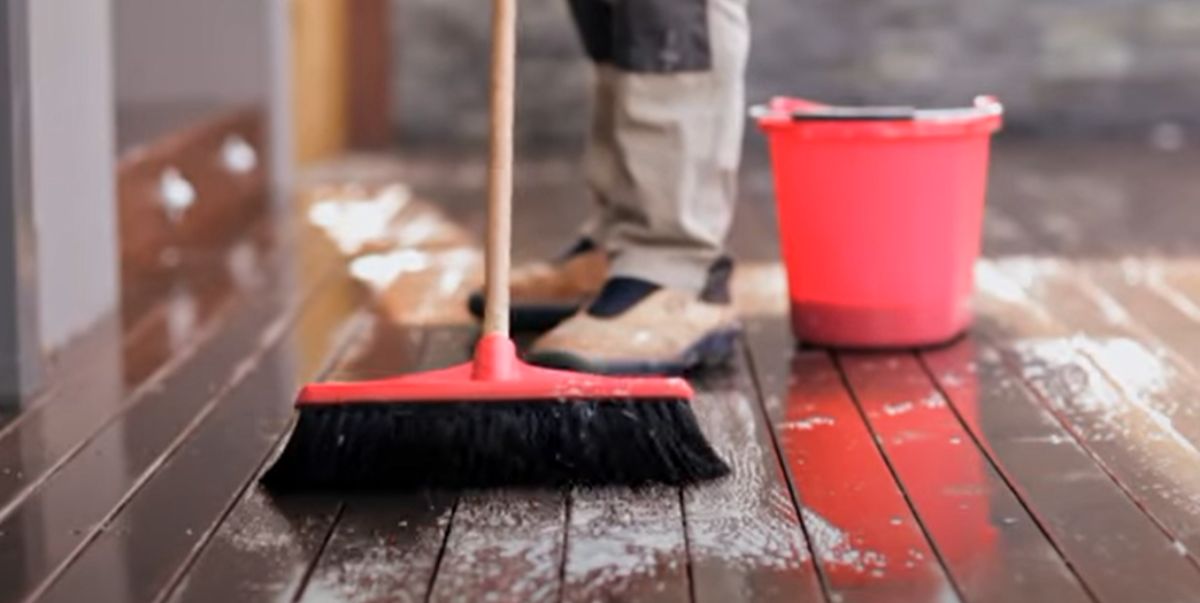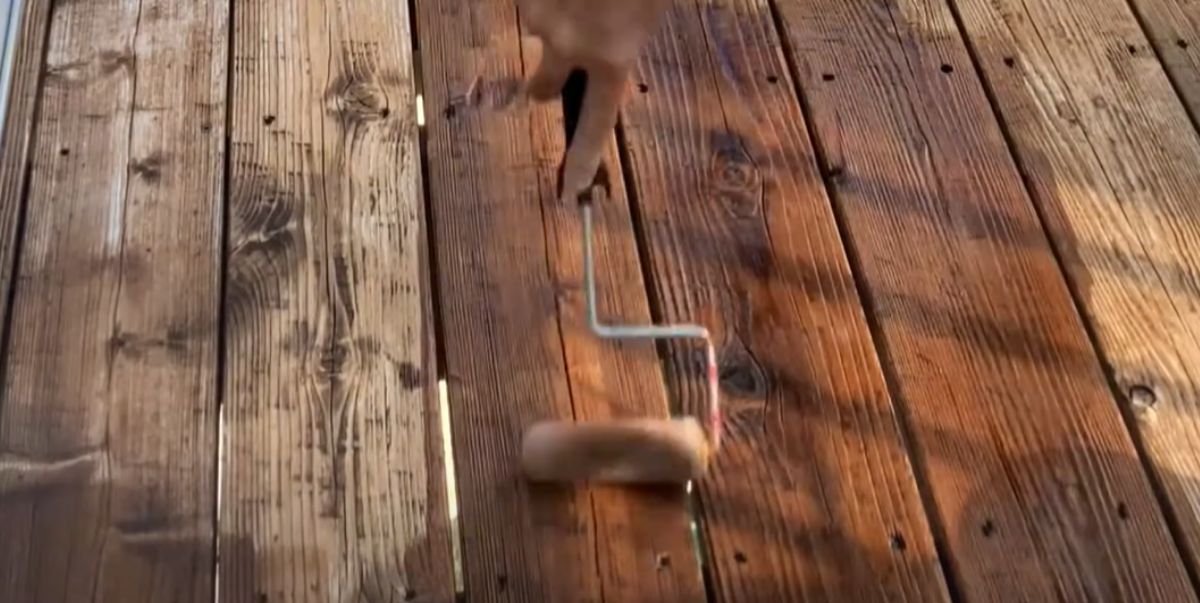Wait for at least 24 hours before applying a second coat of stain. A well-rounded Applying a fresh coat of stain to a wooden surface can enhance its beauty and protect it from the elements.
However, it is crucial to ensure that the first coat of stain has dried completely before applying a second coat. Rushing the process can result in a sloppy finish and decreased durability. It is generally recommended to wait at least 24 hours before applying the second coat of stain.
This waiting period allows sufficient time for the first coat to dry and adhere properly to the wood. By following this guideline, you can achieve a professional and long-lasting stain finish for your wooden projects.
Factors Affecting Stain Drying Time
Stain drying time varies based on humidity, temperature, wood porosity, and type of stain used. Before applying a second coat of stain, ensure the first coat is completely dry to avoid patchy or uneven results. It’s recommended to wait at least 24 hours between coats for optimal adhesion and appearance.
Wood Type
The type of wood being stained is an important factor that can influence how long it takes for the stain to dry. Different types of wood have different densities and moisture content, which can affect the absorption and drying time of the stain. Softwoods, such as pine or cedar, tend to absorb stains quicker than hardwoods like oak or mahogany. This is because softwoods have more open pores, allowing the stain to penetrate deeper into the wood. On the other hand, hardwoods have tighter grain patterns that may slow down the drying process. When applying stains to different wood types, it is important to consider their unique characteristics and adjust your expectations for drying time accordingly.
Weather Conditions
Another crucial factor that affects stain drying time is the weather conditions during and after application. Temperature, humidity, and air circulation can all impact how quickly the stain dries. Ideally, the temperature should be between 60-80°F, as lower temperatures can slow down the drying process, while higher temperatures can cause the stain to dry too quickly. High humidity levels can also prolong the drying time, as moisture in the air slows down evaporation. Additionally, poor air circulation can hinder the drying process, so it’s important to ensure there is adequate ventilation in the area where the stain is being applied. Considering these weather conditions before applying the second coat of stain is essential to achieve optimal results.
Influential factors contributing to stain drying time include the type of wood being stained and the weather conditions during and after application. The wood type determines the density, moisture content, and grain pattern, which affect the absorption and drying process of the stain. Softwoods have more open pores, allowing for quicker stain penetration, while hardwoods with tighter grain patterns require more time. Meanwhile, weather conditions like temperature, humidity, and air circulation also influence drying time. Temperatures between 60-80°F are ideal, as anything below can slow drying, while higher temperatures can cause rapid drying. High humidity levels and poor air circulation can further prolong the process. By considering these influential factors, one can determine the appropriate time for applying a second coat of stain.

Preparation For Second Coat
When staining wood surfaces, applying a second coat is often necessary to achieve the desired color and finish. However, before moving forward with the second coat, proper preparation is essential. In this section, we will discuss the steps involved in preparing for the second coat of stain, ensuring optimal results for your project.
Assessing First Coat
Before you proceed with the second coat of stain, it is crucial to assess the condition and coverage of the first coat. Analyzing the first coat allows you to determine whether it has fully penetrated the wood and whether it requires any touch-ups. Take a close look at the surface and check if there are any uneven areas or spots that appear lighter than others.
Sanding And Cleaning
Sanding the wood surface between coats of stain is necessary to maintain a smooth and even finish. Start by lightly sanding the entire area with fine-grit sandpaper or a sanding block. This step helps to remove any raised wood fibers or imperfections, ensuring a more consistent color application.
Tip: Be cautious not to oversand, as it could lead to a loss of stain color or expose bare wood.
After sanding, it is crucial to remove any dust, debris, or residue left behind. Cleaning the surface ensures better adhesion of the second coat and prevents particles from interfering with the final finish. Use a tack cloth or a damp cloth to gently wipe away all the dust and particles from the sanded surface.
Tip: Allow the surface to dry completely before proceeding to the next step.
In conclusion, proper preparation is key to a successful second coat of stain. Assessing the first coat helps identify any areas that require touch-ups, while sanding and cleaning ensure a smooth and consistent finish. Taking these steps not only enhances the appearance of your wood surface but also provides better protection against wear and tear. By following these guidelines, you can achieve a beautiful, long-lasting finish for your stained wood project.
Application Of Second Coat
Waiting for the first coat of stain to dry completely is crucial before applying the second coat. The recommended drying time can vary, so refer to the manufacturer’s instructions for best results.
When it comes to applying the second coat of stain, an even application technique is crucial for achieving a flawless finish. Even Application Technique involves using smooth, consistent strokes to ensure that the stain is spread evenly across the surface, avoiding any uneven patches or streaks. This technique helps in creating a uniform appearance and enhances the overall visual appeal of the wood.
Drying Time Considerations are also important when applying a second coat of stain. It is essential to allow the first coat to dry completely before applying the second coat. This ensures that the new layer of stain adheres properly and prevents any smudging or blotching. The type of wood, humidity levels, and the specific stain product used can all influence the drying time, so it’s essential to follow the manufacturer’s guidelines for the recommended drying period. In addition, performing a simple touch test can also determine if the first coat is sufficiently dry before proceeding with the second application.
In conclusion, mastering the even application technique and understanding the drying time considerations are essential for successfully applying the second coat of stain. By taking the time to ensure a precise and thorough process, you can achieve a beautifully finished wood surface with an even and rich color.
Troubleshooting Second Coat Issues
After applying the first coat of stain, it is important to wait an appropriate amount of time before applying the second coat. This waiting period allows the first coat to fully dry and prevents issues such as streaks or improper absorption.
When it comes to applying a second coat of stain, there can be a few issues that arise. It’s important to address these issues to achieve the desired finish and ensure lasting results. In this section, we will discuss two common problems that can occur when applying a second coat of stain: Uneven Coloration and Overlapping Stain.
Uneven Coloration
Uneven coloration is a common issue that many DIYers encounter when applying a second coat of stain. This occurs when the color of the stain appears blotchy or inconsistent. It can be frustrating to see patches of darker or lighter color on your wood surface.
To troubleshoot this issue, it’s important to understand the root causes. Uneven coloration can happen if the first coat of stain was not applied evenly or if the wood surface is not properly prepared. Insufficient sanding or cleaning can result in an uneven application of the stain.
To rectify this problem, follow these steps:
- Ensure the wood surface is properly sanded and cleaned before applying the first coat of stain. This will provide a smooth and even surface for the stain to adhere to.
- When applying the first coat of stain, make sure to do so with even and consistent strokes. This will help distribute the stain evenly across the wood surface.
- If you notice uneven coloration after the first coat has dried, you can lightly sand the surface to remove any excess or uneven stain. Be sure to clean the surface thoroughly before applying the second coat.
- When applying the second coat, follow the same techniques as the first coat, ensuring even and consistent strokes.
By following these steps, you can troubleshoot and resolve the issue of uneven coloration when applying a second coat of stain.
Overlapping Stain
Overlapping stain is another issue that can occur when applying a second coat. This happens when the second coat is applied before the first coat has fully dried, resulting in darker patches where the two layers overlap.
To avoid overlapping stain, consider the following troubleshooting tips:
- Allow the first coat of stain to dry completely before applying the second coat. This is typically indicated on the stain product instructions, but a general guideline is to wait at least 24 hours.
- Ensure proper ventilation in the area where you are applying the stain. Good airflow helps the stain dry more efficiently.
- When applying the second coat, overlap the strokes slightly onto the already stained area, but avoid going back over any areas that have already been coated. This will help create a smooth and consistent finish.
- Use smooth and even strokes when applying the second coat to minimize the chance of overlapping.
By following these troubleshooting tips, you can prevent or minimize the issue of overlapping stain and achieve a professional-looking finish.

Final Tips And Recommendations
When it comes to applying a second coat of stain, there are a few final tips and recommendations you should keep in mind to achieve the best possible results. From choosing the right stain to applying a protective sealant, here are some important factors to consider:
Choosing The Right Stain
Choosing the right stain for your project is crucial to achieve the desired finish. Consider the type of wood you are working with and the effect you want to achieve. Dark stains can provide a rich and dramatic look, while lighter stains can highlight the natural beauty of the wood. Take into account factors like durability, UV protection, and ease of application when selecting your stain.
Protective Sealant Application
Once you have applied the first coat of stain and it has dried completely, it is important to apply a protective sealant. This step helps to protect the wood from moisture, UV rays, and wear and tear. Before applying the sealant, ensure the surface is clean, dry, and free from any debris or loose stain. Follow the manufacturer’s instructions for the specific sealant you are using, applying an even and consistent coat. Allow the sealant to dry completely before adding a second coat of stain.
In conclusion, by considering these final tips and recommendations, you can achieve a professional-looking finish with your second coat of stain. Choose the right stain to enhance the beauty of your wood, and don’t forget to apply a protective sealant to ensure long-lasting results.
Frequently Asked Questions Of How Long Before Second Coat Of Stain
What Happens If You Apply Second Coat Of Stain Too Soon?
Applying a second coat of stain too soon can result in an uneven finish. The excess stain may not be absorbed properly, leading to blotches and streaks on the surface. It’s important to allow the first coat to dry completely before applying the second coat to achieve a smooth and uniform appearance.
When Can I Apply A Second Coat Of Stain?
Apply a second coat of stain once the first coat is completely dry. Follow the instructions on the stain can for drying times. Ensure the surface is clean and smooth before applying the second coat to achieve an even finish.
Will 2 Coats Of Stain Make It Darker?
Yes, applying 2 coats of stain will make the color darker.
Can You Apply A Second Coat Of Solid Stain After 24 Hours?
Yes, you can apply a second coat of solid stain after 24 hours.
Conclusion
The ideal time for applying a second coat of stain depends on various factors such as the type of wood, the humidity, and the temperature. By considering these factors and following the manufacturer’s instructions, you can achieve a successful and uniform finish.
Remember to allow adequate drying time between coats and properly prepare the surface for the best results.



3 thoughts on “How Long Before Second Coat of Stain: Expert Tips Revealed!”